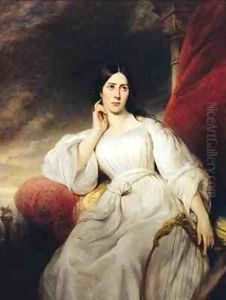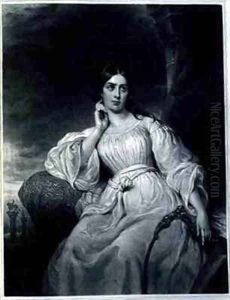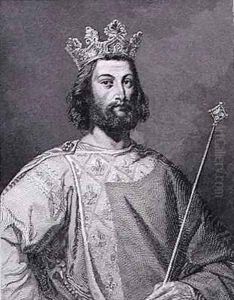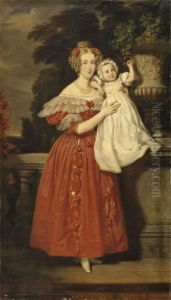Henri Decaisne Paintings
Henri Decaisne was a Belgian historical and portrait painter who was born on January 27, 1799, in Brussels. He studied under Jacques-Louis David, the renowned French neoclassical painter, which significantly influenced his artistic development. Decaisne's early work was marked by the neoclassical style, characterized by a focus on idealized forms and clarity of line, which were the hallmarks of his teacher's influence.
Decaisne's career began to flourish in the 1820s when he started to receive recognition for his historical paintings. He was particularly known for his skill in portraiture, capturing the likenesses and personalities of his subjects with great sensitivity and detail. His talent earned him commissions from various European aristocrats and notables, as well as from the Belgian Royal Family.
In 1830, Decaisne moved to Paris, which was then a hub for artists and intellectuals. His reputation continued to grow as he exhibited his work at the Paris Salon, where he received several awards. Decaisne's historical paintings often depicted scenes from ancient history and mythology, but he also tackled contemporary subjects, such as the Belgian Revolution of 1830, which he supported.
Throughout his career, Decaisne also engaged in lithography and illustrated books. His versatility and willingness to explore different media contributed to his success as an artist. Despite living in Paris, he maintained strong ties with Belgium and contributed to the development of the Belgian art scene.
Henri Decaisne passed away on October 17, 1852, in Paris. Although he is less well-known today, during his lifetime, he was highly regarded for his contributions to neoclassical and historical painting. His works can be found in various museums and collections, both in Belgium and France, serving as a testament to his skill and creativity as an artist.










